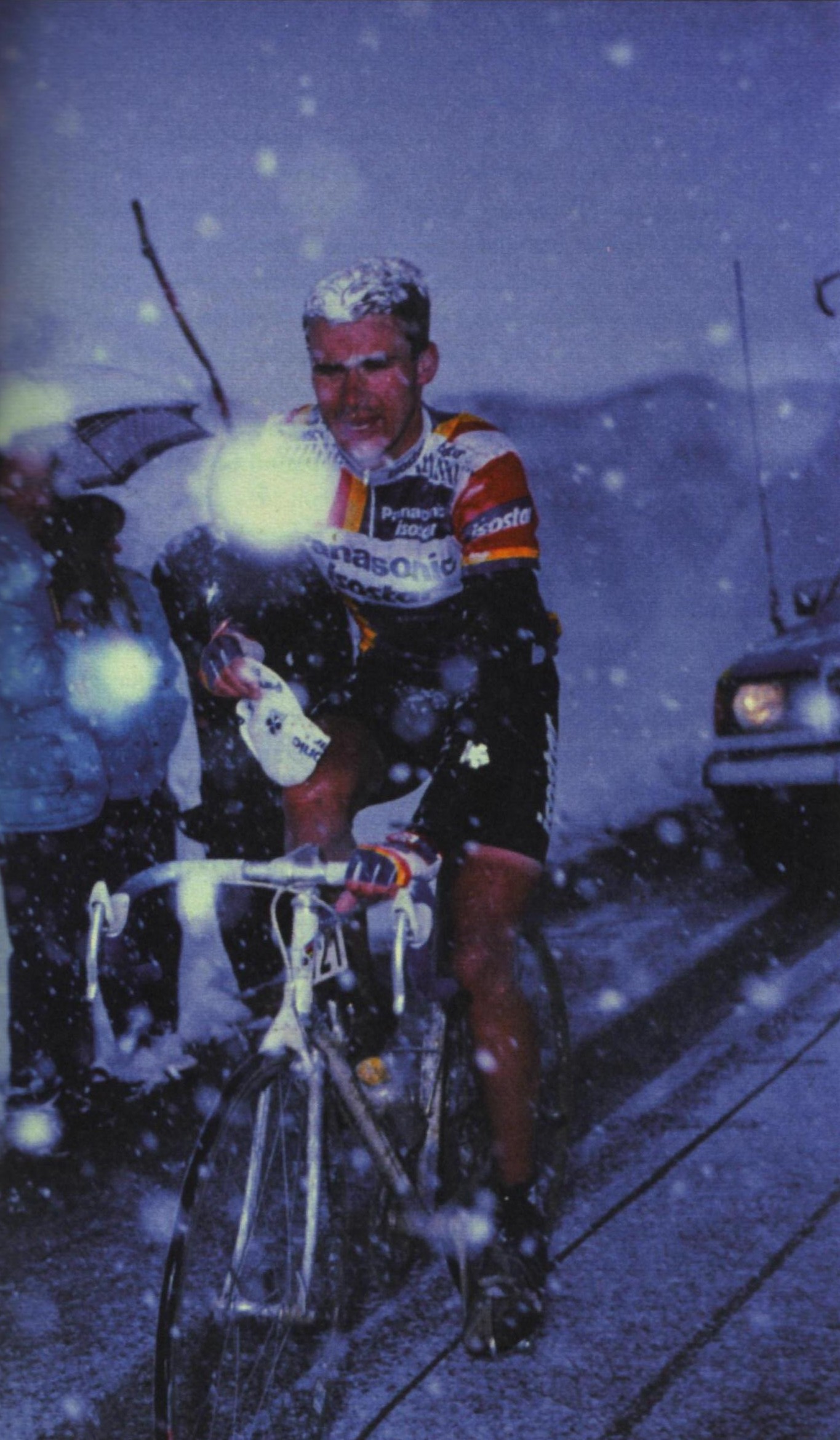Cycling is blessed with truckloads of mountains that will forever be part of the history of the sport. Some, like the Zoncolan in Italy and the Angliru in Spain, are renowned for their brutally steep slopes, while others, such as Col d’Aubisque in France and Passo Pordoi in Italy, have featured in Grand Tour itineraries so often that they have become household names among fans of cycling.
Another group of famous climbs are forever linked to the name of a certain rider or the events of a particular and dramatically unforgettable stage. Col du Tourmalet and the tale of Eugène Christophe's broken fork are inseparable as are the Mont Ventoux and the tragic death of Tom Simpson.
The Passo di Gavia in the Lombardy region, made its Giro d’Italia debut in 1960 when Italian Imero Massignan became the first ever rider to crest the summit at the altitude of 2,621 metres on bad roads and in hostile weather conditions. It had to wait for 28 years to be included in the Giro again but when it returned, it did so with a stage that became an instant classic in cycling folklore. Erik Breukink won the stage and American Andy Hampsten would eventually win the overall but the stage is mostly remembered for the slushy snow covering the riders as they struggled in polar temperatures and almost no visibility. Several riders simply abandoned the stage to seek refuge in nearby houses or barns while others were driven down the mountain in their team cars as organizers either failed to notice or deliberately turned a blind eye. Huge chunks of the 2013 season has so far been affected by less than favourable weather conditions but nothing has matched the ordeals that the riders of that infamous stage had to face. Highlights from that stage can be found here:
The Gavia can sometimes be overshadowed by its near neighbours, the somewhat higher Passo dello Stelvio and the bone-breaking Passo di Mortirolo, but that is not to say this beautiful and challenging pass is any lesser a climb. Featuring prominently in this year’s Giro itinerary, the Gavia is over 20km long and has an average gradient of 6.6 per cent, yet that doesn't tell the whole story, because certain sections kick up violently to as steep at 16 per cent and the switchbacks on its higher slopes are the equal of the Stelvio. The Giro will this year ascend via the southern side, from the town of Ponte di Legno, at the very start of stage 19, before testing the riders with a fast and winding descent into the ski resort of Bormio. From there it’s straight up to the summit of the Stelvio for another long, demanding climb and later the stage finishes atop the Val Martello Martelltal. Weather conditions permitting, this should prove a fascinating, unforgettable stage, even if it may fail to provide the same spectacle as it did 25 years ago. The Giro organizers have assembled a video celebrating the myth of this beautiful giant:
Passo di Gavia facts (from the Ponte di Legno side):
Height: 2,621m
Length: 20.7km
Average gradient: 6.6%
Maximum gradient: 16%
| Alfredo RIOS 40 years | today |
| Stephen KEEPING 38 years | today |
| Manuel FRANZONI 19 years | today |
| Sandro TEIXEIRA 21 years | today |
| Sebastian Sigurd NIELSEN 21 years | today |
© CyclingQuotes.com









